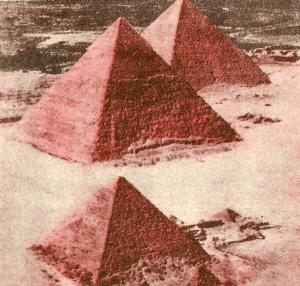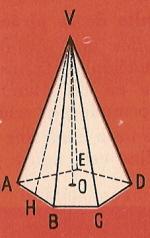
Area and volume of the pyramid |

1. Pyramid parts
The Egyptian pyramids are famous.
The face that rests on the floor is the base.
Its lateral faces are Triangles which have a common vertex that is the vertex of the pyramid.
The height of the pyramid is the perpendicular segment of the apex above the base.
The apothem of a regular pyramid is the height of one of the lateral triangles.

Look at this figure and answer: